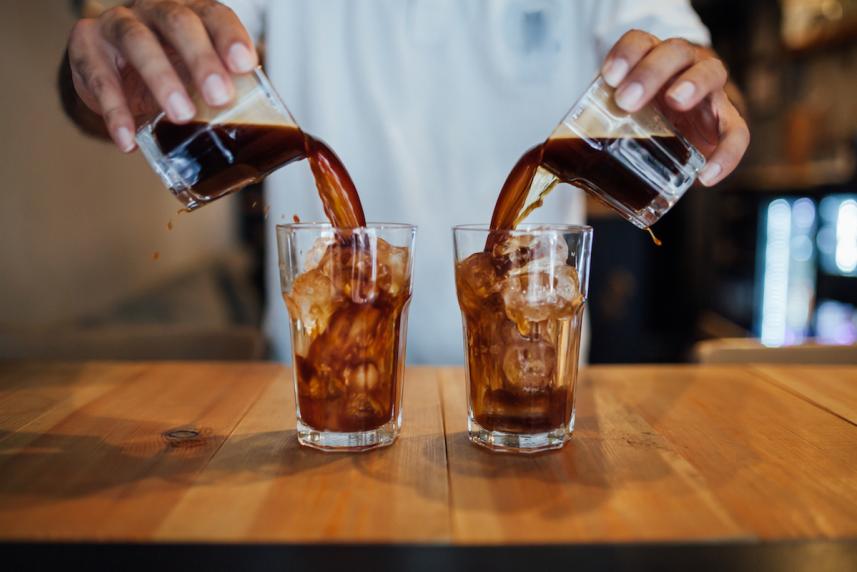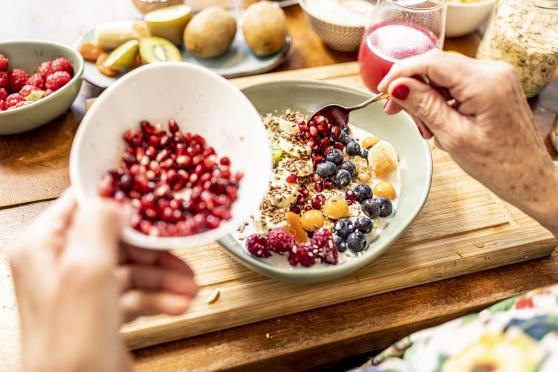Hot brew vs. cold brew: Which is better for your health?
Here’s what the science says—plus, five other ways to maximize your coffee’s health benefits.

Scientists are waking up to the health benefits of coffee. Large studies suggest it staves off heart disease, diabetes, and some cancers. A cup of joe may even promote a longer life. But what about the increasingly popular cold-brewed kind—is that just as healthy as hot?
Maybe not. When researchers in Philadelphia compared the chemical compositions of the two, they found that the hot brew contained 11 to 35 percent more antioxidants than the cold brew.
Antioxidants are chemical compounds that neutralize the damaging “free radicals” in the body that are linked to aging and disease. Coffee is rich in antioxidants, which may be one reason for its protective effects.
“You could find 200 articles about the benefits of coffee, but it’s implied you’re drinking hot-brewed,” says study coauthor Megan Fuller, Ph.D., a visiting researcher at Thomas Jefferson University. “So the question becomes, can we expect similar benefits to be conveyed to cold-brew coffee drinkers[?] And our data suggests there very well could be differences.”
The reason: Hot water may be more effective at extracting acidic compounds (including antioxidants) from the grounds, Fuller says. Increasing the water’s temperature boosts its kinetic energy. And the more energy that goes into the water, the more compounds it can remove from the grounds.
“It’s a bit like tug-of-war,” says Fuller. “That coffee grind, that physical matrix, wants to hold on to those compounds, and the water wants those compounds, too. Hot water can win that tug-of-war more often than cold water [can].”
Cold-brewed coffee, which is made by steeping coffee grounds in room temperature water for 12 hours or more, has time to tease out those compounds. But hot water exposure, even just for a few minutes, appears to extract more.
In the study, the cold brew was made using 72-degrees Fahrenheit water, and water for the hot brew was just off the boil, about 200 degrees. “In a chemical application, that’s a big difference,” says Fuller.
One caveat: Cold brew is made with a high grounds-to-water ratio, yielding a concentrate that is then diluted to taste. To control for variables, both the hot and cold brew were made with the same grounds-to-water ratio, meaning the hot brew was much more concentrated than it typically would be.
“I would drink neither of those cups of coffee,” Fuller notes. “But it did show us the difference.”
This doesn’t mean you have to stop drinking cold brew. Chances are, you’re mainly drinking it for the flavor and the caffeine boost anyway, not the health benefits. Just be sure you’re eating plenty of antioxidant-rich fruits and vegetables, too.
Some other ways chemistry may enhance your coffee’s antioxidant potential:
1. Drink a lighter roast. Roasting changes the chemical composition of coffee beans. That’s why darker roasts, which cook longer than light or medium roasts, tend to have less caffeine. But they may also have lower antioxidant levels, according to a 2017 study in the Journal of Medicinal Food. “The difference between a light roast and a dark roast,” says Fuller, “could be just as big as the difference between hot and cold brew.”
2. Store it in an airtight container. Coffee beans will spoil, especially if they’re pre-ground. In a 2016 study in Food Chemistry, researchers found that the level of free radicals (a byproduct of oxidation) increased at a much faster rate in pre-ground coffee versus whole-bean. Both samples were stored in the open air. Grind your own, or keep pre-ground coffee in a sealed container.
3. Use a finer grind. A finer grind reduces the flow rate, increasing the amount of time the grounds are in contact with the water. The longer the contact time, the more compounds can be extracted, says Fuller. “When you use coarse grinds, you might actually be wasting your coffee,” she notes, “because you’re not extracting from it what you could.” Opting for a medium grind (pour-over method) instead of a coarse, French-press style grind could yield greater extraction, potentially boosting antioxidant activity.
4. Drink it right away. Good things don’t always come to those who wait. Brewed coffee that sits may lose antioxidants over time, Fuller says. In fact, that’s another reason why hot brew may be preferable to cold brew—people tend to drink hot coffee fresh, while cold-brewed coffee is made in larger batches and stored for days or weeks. “The best way to drink coffee may be the way we’ve been doing it for millennia,” Fuller says. “We had it right the first time!”
5. Keep it under six cups. You may think more is better, but studies linking coffee to lower cancer risk suggest there may be a point of diminishing returns. The results tend to be U-shaped, Fuller says. “You can have too little or too much.” The sweet spot seems to be between three and six 8-ounce cups. “It’s certainly more than one cup and less than a crazy amount,” Fuller says.


